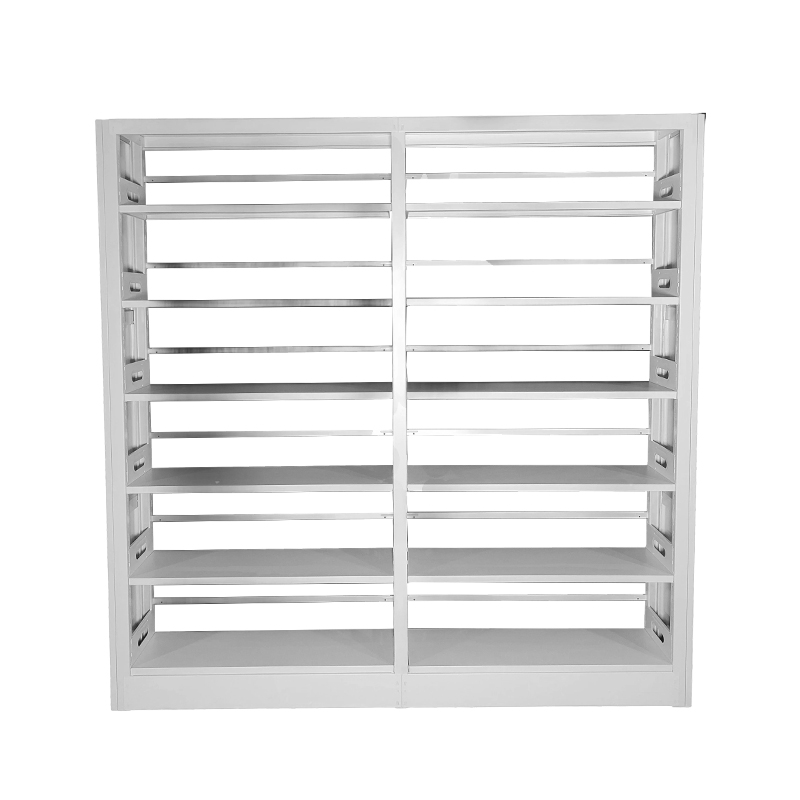What protective measures should be taken when using steel bookshelf in a humid environment for a long time?
Release Time : 2025-10-23
When used in humid environments for extended periods, steel bookshelves require multifaceted protective measures to combat oxidation, rust, and structural deformation. This protection strategy must balance environmental isolation, material protection, and routine maintenance. Moisture in humid air is a primary threat to steel bookshelves. When humidity exceeds 65%, a water film easily forms on the metal surface, accelerating electrochemical corrosion reactions, leading to paint loss and oxidation and rusting of the iron substrate. Therefore, controlling humidity is a key prerequisite for protection.
Isolation requires both spatial layout and physical barriers. Steel bookshelves should be placed away from high-humidity areas such as bathrooms and kitchens. They should be placed 10-15 cm from the wall and placed with moisture-proof wooden blocks or rubber mats underneath to prevent direct penetration of moisture from the floor. For open bookshelves, cover the shelves with transparent plastic film or waterproof cloth to create a physical barrier. For closed bookshelves, keep the doors tightly closed to reduce the exchange of air between the interior and the humid environment.
Material protection requires a combination of coating repair and the application of rust inhibitors. Steel bookshelves are typically electrostatically painted upon leaving the factory. However, over time, scratches and bumps can damage the paint layer, exposing the base material. Repair damaged areas with a matching paint pen. After drying, apply clear nail polish or car wax to enhance local water resistance. For overall protection, regularly apply anti-rust spray. Its active ingredients, such as zinc and aluminum, form a dense oxide film on the metal surface, isolating it from moisture and oxygen.
A routine cleaning and inspection regimen is essential for daily maintenance. Wipe the bookshelf surface weekly with a dry, soft cloth to remove dust and absorbed moisture. Avoid using damp cloths or corrosive cleaners. Inspect hidden areas such as bookcase joints and shelf supports monthly. Immediately sand any rust to the original metal color, apply anti-rust oil, and cover with waterproof tape. Avoid direct contact between bookshelves and the metal shelves. Apply moisture-proof paper or non-woven fabric to the shelf surfaces to prevent moisture from sticking to the metal.
Auxiliary dehumidification requires a combination of tools and materials. During humid weather, place bags of quicklime or silica gel desiccant at the bottom of the bookshelf. These absorb up to 30% of their own weight and need to be replaced every two weeks. For large bookshelves, install a small dehumidifier to maintain a humidity level between 50% and 60%. If a musty odor develops inside the bookshelf, place bags of bamboo charcoal or activated charcoal cartridges; their porous structure effectively absorbs odor and moisture.
Structural protection requires attention to load-bearing and deformation. In humid environments, steel bookshelf shelves may expand due to moisture absorption, causing warping. Avoid placing books or heavy objects weighing more than 20 kg on a single shelf. For bookshelves with larger spans, add vertical support rods in the middle to distribute the pressure between shelves. When transporting or moving bookshelves, wrap corners with felt or bubble wrap to prevent impacts that could cause paint peeling.
Long-term protection requires a preventive maintenance system. Conduct a comprehensive inspection of the bookshelf every six months, focusing on rusting in stress-concentrated areas such as welds and screw joints. For coastal areas or high-humidity areas, it's recommended to choose bookshelves made of galvanized steel or 304 stainless steel, as they offer superior corrosion resistance to ordinary cold-rolled steel. If a bookshelf has extensive rust, contact a professional manufacturer for sandblasting and repainting to avoid uneven protective coatings caused by DIY repairs.





